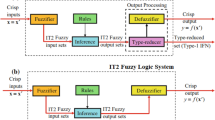Abstract
The frequent occurrence of various sudden natural disasters in the world has caused heavy losses to human beings. It is very important to forecast the demand of emergency materials in order to protect people's safety and property. The purpose of this study is to use IACO-BP algorithm to forecast the demand of emergency supplies in the case of flood disaster. In this study, the flood disaster situation in recent years published by the Ministry of Water Resources of China is selected as the experimental data set. The data are sorted and analyzed by a variety of theoretical comprehensive operation, qualitative and quantitative research method, analytic hierarchy process and system dynamics method. The improved ant colony optimization algorithm is used to model the emergency material demand, and the population, flood level, flood level of the disaster area are analyzed. As the network input, the material situation outputs the material demand, so as to forecast. The results show that the iteration times of IACO-BP algorithm are 11 and the running time is 3S. The fluctuation of IACO-BP algorithm is the least and the most stable among the three algorithms. The material satisfaction degree predicted by IACO-BP algorithm is improved by 15% from the original 80.9%. It is concluded that this algorithm is very accurate and efficient in the prediction of emergency material demand, which can better assist the disaster situation. This study contributes to the prediction of emergency material demand for emergency disaster.

Data source: emergency disaster database (me-dat)











Similar content being viewed by others
References
Chen AY, Lu TY, Ma HM et al (2016) Demand Forecast using data analytics for the preallocation of ambulances. IEEE J Biomed Health Inform 20(4):1178–1187
Kwon HY, Kang YO (2016) Risk analysis and visualization for detecting signs of flood disaster in Twitter. Spatial Inf Res 24(2):127–139
Khan MG et al (2017) Communities’ local knowledge of flood disaster management in Pakistan. Adv Sci Lett 23(7):6087–6090
Chung J (2016) Conflicts and natural disaster management: a comparative study of flood control in the Republic of Korea and the United States. Disasters 40(3):554–572
Su M, Zheng Y, Hao Y et al (2017) The influence of landscape pattern on the risk of urban water-logging and flood disaster. Ecol Indic 92(9):133–140
Cipolla E, Maniscalco U, Rizzo R et al (2017) Analysis and visualization of meteorological emergencies. J Ambient Intell Hum Comput 8(1):57–68
Zuo J, Lyv M, Zhang ZH et al (2019) Research on the Process Supervision and Forecasting Model of Railway Emergency Based on GERTS. Int J Pattern Recognit Artif Intell 33(1):1959003.1-1959003.17
Jilani T, Housley G, Figueredo G et al (2019) Short and Long term predictions of Hospital emergency department attendances. Int J Med Inf 129(9):167–174
Suh DY, Ryerson MS (2019) Forecast to grow: aviation demand forecasting in an era of demand uncertainty and optimism bias. Transp Res 128(8):400–416
Aneiros G, Vilar J, Rana P (2016) Short-term forecast of daily curves of electricity demand and price. Int J Electr Power Energy Syst 80(9):96–108
Herrera CA (2017) Proposing a physiological model for Emergency Department. Operating principles, classification of overcrowding and guidelines for redesign. Anales del sistema sanitario de Navarra 40(1):11–24
Aerts JCJH, Botzen WJ, Clarke KC et al (2018) Integrating human behaviour dynamics into flood disaster risk assessment. Nat Climate Change 8(3):193–199
Bower B (2016) Flood tale rooted in real disaster: deluge might have given china’s first dynasty wet start. Sci News 190(5):6–6
Wang Y, Yuan X (2016) Comprehensive evaluation of urdan flood control and disaster reduction ability based on principal component analysis. J Nat Disasters 25(6):1–8
Khantong S, Ahmad MN (2020) An ontology for sharing and managing information in disaster response: in flood response usage scenarios. J Data Semant 9(1):39–52
Ni Y, Uebele M (2019) Size and structure of disaster relief when state capacity is limited: China’s 1823 flood. Aust Econ Hist Rev Asia-Pac J Econ Bus Soc Hist 59(1):24–54
Aerts JCJH, Botzen WJ, Clarke KC et al (2018) Integrating human behaviour dynamics into flood disaster risk assessment. Nat Clim Change 8(3):193–199
Yu-Yan W, Yan-Jun W, Tong J (2016) Spatial-temporal characteristics of exposure and vulnerability to flood disaster in Jiangsu Province. J Yangtze River Sci Res Inst 33(4):27–32
Wan H, Song H, Zhu C et al (2018) Spatio-temporal evolution of drought and flood disaster chains in Baoji area from 1368 to 1911. J Geogr Sci 28(3):337–350
Li K, Gao W, Zhao Y et al (2017) Research on flood disaster in north Henan area during the Medieval Warm Period. J Nat Disasters 26(2):81–89
He YH, Jiang RC, Gu SX (2017) Applied prospect of modern information technology in relation to mountain flood disaster monitoring and early warning system. J Inf Optim Sci 38(7):1151–1167
Seung HL et al (2017) Development of compression and transmission technology of GIS-based high resolution image data in flood disaster situation. J Korea Multimedia Soc 20(7):1038–1045
Nguyen NY, Ichikawa Y, Ishidaira H (2017) Establishing flood damage functions for agricultural crops using estimated inundation depth and flood disaster statistics in data-scarce regions. Hydrol Res Lett 11(1):12–18
Chinnarasri C, Phothiwijit K (2016) Appropriate engineering measures with participation of community for flood disaster reduction: case of the Tha Chin Basin. Thailand Arab J Sci Eng 41(12):4879–4892
Author information
Authors and Affiliations
Corresponding author
Ethics declarations
Conflict of interest
There are no potential competing interests in our paper. And all authors have seen the manuscript and approved submission of your journal. We confirm that the content of the manuscript has not been published or submitted for publication elsewhere.
Additional information
Publisher's Note
Springer Nature remains neutral with regard to jurisdictional claims in published maps and institutional affiliations.
Rights and permissions
About this article
Cite this article
Chen, F., Chen, J. & Liu, J. Forecast of flood disaster emergency material demand based on IACO-BP algorithm. Neural Comput & Applic 34, 3537–3549 (2022). https://doi.org/10.1007/s00521-021-05883-1
Received:
Accepted:
Published:
Issue Date:
DOI: https://doi.org/10.1007/s00521-021-05883-1




